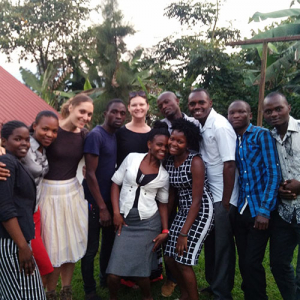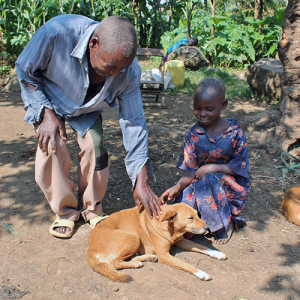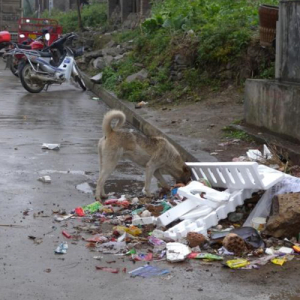Global Child Injury Prevention
-
UAB and Ugandan researchers pose together for a photo.
-
Learning to be safe with dogs in rural Uganda.
-
A dog on the streets of rural China.
According to the World Health Organization, over 95% of global child injury deaths occur in low- and middle-income nations. The UAB Youth Safety Lab collaborates with researchers worldwide to develop and evaluate culturally relevant injury prevention strategies.
For example, we have developed a close relationship with Professor Guoqing Hu and his laboratory at Central South University, in Changsha, China, where we have conducted a range of studies to understand and prevent injuries to children in China. We also collaborate with researchers in Iran, most often to study suicide prevention in that country. Several years ago, we worked with the Paraffin Safety Association of Southern Africa to evaluate a community-based program on kerosene (paraffin) safety. Most recently, we have partnered with an NGO in Eastern Uganda to implement a school-based program to reduce child injury risk among children in rural Ugandan villages, with Dr. Huarong Wang and her colleagues to study child pedestrian safety in China, and with Dr. Zahra Tabibi and her colleagues to study road traffic safety in Iran.
Sample Publications
- He, J., Wang, W., Ning, P., Schwebel, D. C., Yang, Y., Cheng, P., Li, J., Zhao, M., Li, W., Liu, H., Zhang, N., & Hu, G. (2023). Evaluating the effectiveness of the Safety Experience Room, an affordable interactive education intervention to prevent unintentional injury among rural preschoolers in China: Protocol for a cluster randomized controlled trial. BMC Public Health, 23, 531.
- Tabibi, Z., Schwebel, D. C., & Juzdani, M. H. (2023). How does Attention Deficit Hyperactivity Disorder affect children’s road crossing? A case-control study. Traffic Injury Prevention, 24, 315-320.
- Ning, P., Zong, H., Li, L., Cheng, P., Schwebel, D. C., Yang, Y., Yang, L., Wu, Y., Zhao, M., & Hu, G. (2022). Effectiveness of a helmet promotion campaign, China. Bulletin of the World Health Organization, 100, 329-336.
- Wang, H., Wang, A., Su, F., & Schwebel, D. C. (2022). The effect of age and sensation seeking on pedestrian crossing safety in a virtual reality street. Transportation Research Part F: Traffic Psychology and Behaviour, 88, 99-110.
- Wang, H., Morgan, C., Li, D., Huang, R., & Schwebel, D. C. (2021). Children’s fear in traffic and its association with pedestrian decisions. Journal of Safety Research, 76, 56-63.
- Juzdani, M. H., Morgan, C. H., Schwebel, D. C., & Tabibi, Z. (2020). The roles of emotion-based temperamental fear and anger and emotional decision making in children’s road-crossing behavior. Journal of Pediatric Psychology, 45, 1188-1198.
- Schwebel, D. C., Wu, Y., Li, P., Severson, J., He, Y., Xiang, H., & Hu, G. (2018). Evaluating smartphone-based virtual reality to improve Chinese schoolchildren’s pedestrian safety. Journal of Pediatric Psychology, 43, 473-484.
- Swanson, M. H., Johnston, A., Rouse, J. B., & Schwebel, D. C. (2018). Sibling supervision: A risk-factor for unintentional childhood injury in rural Uganda? Clinical Practice in Pediatric Psychology, 6, 364-374.
- Shen, J., Pang, S., & Schwebel, D. C. (2016). A randomized trial evaluating child dog-bite prevention in rural China through video-based testimonials. Health Psychology, 35, 454-464.
- Schwebel, D. C., Swart, D., Hui, S-K. A., Simpson, J., & Hobe, P. (2009). Paraffin-related injury in low-income South African communities: Knowledge, practice, and perceived risk among residents. Bulletin of the World Health Organization, 87, 700-706.
- Schwebel, D. C., Swart, D., Simpson, J., Hui, S-K. A., & Hobe, P. (2009). An intervention to reduce kerosene-related injury in low-income South African communities. Health Psychology, 28, 493-500.



